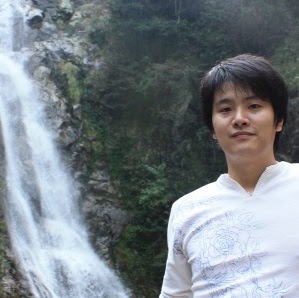Hui Zhang Sun
age ~62
from Los Altos, CA
- Also known as:
-
- Julie Hui Sun
- Hui Sun Zhang
- Sun Hui
- Phone and address:
- 833 Hierra Ct, Los Altos, CA 94024
Hui Sun Phones & Addresses
- 833 Hierra Ct, Los Altos, CA 94024
- Watsonville, CA
- Windermere, FL
- Orlando, FL
- Hercules, CA
- Gilroy, CA
- Pittsburg, CA
- Mountain View, CA
- American Canyon, CA
- Antioch, CA
Lawyers & Attorneys

Hui Sun, San Jose CA - Lawyer
view sourceAddress:
Po Box 700977, San Jose, CA 95170
(408)7998687 (Office)
(408)7998687 (Office)
Licenses:
California - Active 2010
Education:
Santa Clara Univ SOL

Hui Sun - Lawyer
view sourceISLN:
922625916
Admitted:
2010
University:
Santa Clara Univ SOL; Santa Clara CA; Foreign School
Us Patents
-
Apparatus And Methods For Moving Cable Modems Between Upstream Channels
view source -
US Patent:8201207, Jun 12, 2012
-
Filed:Dec 15, 2008
-
Appl. No.:12/334777
-
Inventors:James S. An - Sunnyvale CA, US
Hui Sun - San Jose CA, US
De Fu Li - Wayland MA, US
Keil Brewer - San Jose CA, US
John J. Downey - Apex NC, US
Chrisanto D. Leano - San Jose CA, US -
Assignee:Cisco Technology, Inc. - San Jose CA
-
International Classification:H04N 7/173
-
US Classification:725111, 370225, 370252, 370397, 370399, 375219, 375222, 709223, 709224
-
Abstract:Disclosed are apparatus and methods for managing upstream channels on a per cable modem basis. In certain embodiments, one or more thresholds are defined for each of a plurality of upstream logical channels of a headend system for receiving data from a plurality of cable modems (or other types of access nodes). Each defined threshold corresponds to a measurable parameter of the corresponding upstream logical channel. One or more metrics are collected for each cable modem of each upstream logical channel. It is determined whether to downgrade a selected cable modem to a selected one of the logical channels that has a lower performance level than the selected cable modem's current logical channel. Such downgrade determination is based on whether the selected cable modem's collected one or more metrics have failed a condition of the one or more defined thresholds and whether a percentage of a total of the cable modems of such current logical channel that have failed a condition for the one or more defined thresholds is less than a predefined percentage level. The selected cable modem is then caused to move from the current logical channel to the selected logical channel when the percentage of the total cable modems that have failed is below a predefined level if such selected logical channel is available.
-
Modem Count Based Load Balancing In A Cable Network
view source -
US Patent:8310926, Nov 13, 2012
-
Filed:Feb 18, 2010
-
Appl. No.:12/708313
-
Inventors:Alon S. Bernstein - Sunnyvale CA, US
Gitesh Shah - San Jose CA, US
Cindy Chan - San Jose CA, US
Hui Sun - San Jose CA, US -
Assignee:Cisco Technology, Inc. - San Jose CA
-
International Classification:G08C 15/00
-
US Classification:370230, 370437, 370468
-
Abstract:Load balancing across RF channels in a cable plant is challenging where individual cable modems have multiple receive/transmit channels. Load balancing may be taken into account in the assignments of channels to requesting modems in a registration process. Requesting modems may be registered in a sequence of descending order defined by the number of channels requested. Channel sets may be selected to minimize a maximum delta metric of load balancing. It is preferred to normalize the “weight” of a modem on a channel based on the modem capabilities. The relative weight may be inversely related to the number of channels supported by the modem. Load balancing techniques disclosed may be applied to both upstream and downstream channels. Current load balance quality is estimated and reported to an operator.
-
Directional Selective Junction Clean With Field Polymer Protections
view source -
US Patent:20220336223, Oct 20, 2022
-
Filed:Jun 22, 2022
-
Appl. No.:17/846155
-
Inventors:- Santa Clara CA, US
Xuesong Lu - San Jose CA, US
Tae Hong Ha - San Jose CA, US
Xianmin Tang - San Jose CA, US
Andrew Nguyen - San Jose CA, US
Philip A. Kraus - San Jose CA, US
Chung Nang Liu - Foster City CA, US
Hui Sun - San Jose CA, US
Yufei Hu - Fremont CA, US -
Assignee:Applied Materials, Inc. - Santa Clara CA
-
International Classification:H01L 21/311
H01L 21/02
H01J 37/32
H01L 21/683
H01L 21/3105
H01L 21/67
H01L 21/8234 -
Abstract:Described is a process to clean up junction interfaces for fabricating semiconductor devices involving forming low-resistance electrical connections between vertically separated regions. An etch can be performed to remove silicon oxide on silicon surface at the bottom of a recessed feature. Described are methods and apparatus for etching up the bottom oxide of a hole or trench while minimizing the effects to the underlying epitaxial layer and to the dielectric layers on the field and the corners of metal gate structures. The method for etching features involves a reaction chamber equipped with a combination of capacitively coupled plasma and inductive coupled plasma. CHFgases and plasma are used to form protection layer, which enables the selectively etching of bottom silicon dioxide by NH—NFplasma. Ideally, silicon oxide on EPI is removed to ensure low-resistance electric contact while the epitaxial layer and field/corner dielectric layers are—etched only minimally or not at all.
-
Directional Selective Junction Clean With Field Polymer Protections
view source -
US Patent:20210366722, Nov 25, 2021
-
Filed:May 22, 2020
-
Appl. No.:16/881145
-
Inventors:- Santa Clara CA, US
Xuesong Lu - San Jose CA, US
Tae Hong Ha - San Jose CA, US
Xianmin Tang - San Jose CA, US
Andrew Nguyen - San Jose CA, US
Philip A. Kraus - San Jose CA, US
Chung Nang Liu - Foster City CA, US
Hui Sun - San Jose CA, US
Yufei Hu - Fremont CA, US -
Assignee:Applied Materials, Inc. - Santa Clara CA
-
International Classification:H01L 21/311
H01L 21/02
H01J 37/32
H01L 21/683
H01L 21/3105
H01L 21/67
H01L 21/8234 -
Abstract:Described is a process to clean up junction interfaces for fabricating semiconductor devices involving forming low-resistance electrical connections between vertically separated regions. An etch can be performed to remove silicon oxide on silicon surface at the bottom of a recessed feature. Described are methods and apparatus for etching up the bottom oxide of a hole or trench while minimizing the effects to the underlying epitaxial layer and to the dielectric layers on the field and the corners of metal gate structures. The method for etching features involves a reaction chamber equipped with a combination of capacitively coupled plasma and inductive coupled plasma. CHFgases and plasma are used to form protection layer, which enables the selectively etching of bottom silicon dioxide by NH—NFplasma. Ideally, silicon oxide on EPI is removed to ensure low-resistance electric contact while the epitaxial layer and field/corner dielectric layers are—etched only minimally or not at all.
-
Method Of Enhanced Selectivity Of Hard Mask Using Plasma Treatments
view source -
US Patent:20190043723, Feb 7, 2019
-
Filed:Jul 16, 2018
-
Appl. No.:16/035994
-
Inventors:- Santa Clara CA, US
Yangchung LEE - Oakland CA, US
Chain LEE - Sunnyvale CA, US
Hui SUN - Santa Clara CA, US
Jonathan Sungehul KIM - Danville CA, US -
International Classification:H01L 21/033
H01L 21/3213
H01L 21/311 -
Abstract:Implementations described herein generally relate to an etching process for etching materials with high selectivity. In one implementation, a method of etching a gate material to form features in the gate material is provided. The method includes (a) exposing a cobalt mask layer to a fluorine-containing gas mixture in a first mode to form a passivation film on the cobalt mask layer. The cobalt mask layer exposes a portion of a gate material disposed on a substrate. The method further comprises (b) exposing the portion of the gate material to an etching gas mixture in a second mode to etch the portion of the gate material. The portion of the gate material is etched through openings defined in the cobalt mask layer and the portion of the gate material is etched at a greater rate than the cobalt mask layer having the passivation layer disposed thereon.
-
Methods For Manufacturing A Spacer With Desired Profile In An Advanced Patterning Process
view source -
US Patent:20160293420, Oct 6, 2016
-
Filed:Feb 12, 2016
-
Appl. No.:15/043183
-
Inventors:- Santa Clara CA, US
Hui SUN - Santa Clara CA, US
Chung LIU - Foster City CA, US
Benjamin SCHWARZ - San Jose CA, US -
International Classification:H01L 21/033
H01L 21/32
H01L 21/311 -
Abstract:Embodiments herein provide apparatus and methods for performing an etching process on a spacer layer with good profile control in multiple patterning processes. In one embodiment, a method for patterning a spacer layer during a multiple patterning process includes conformally forming a spacer layer on an outer surface of a patterned structure disposed on a substrate, wherein the patterned structure has having a first group of openings defined therebetween and etching the spacer layer disposed on the substrate while forming an oxidation layer on the spacer layer.
Name / Title
Company / Classification
Phones & Addresses
President
GOOD VIEW INTERNATIONAL INVESTMENT CORP
Investor
Investor
7760-E Monterey Rd, Gilroy, CA 95020
7760 Monterey St, Gilroy, CA 95020
7760 E Monterey Rd, Gilroy, CA 95020
7760 Monterey St, Gilroy, CA 95020
7760 E Monterey Rd, Gilroy, CA 95020
Medicine Doctors

Hui Sun
view sourceSpecialties:
Internal Medicine
Work:
Tri-County Medical Associates
14 Prospect St, Milford, MA 01757
(508)4731480 (phone), (508)4731210 (fax)
14 Prospect St, Milford, MA 01757
(508)4731480 (phone), (508)4731210 (fax)
Education:
Medical School
Beijing Med Univ, Beijing City, Beijing, China
Graduated: 1990
Beijing Med Univ, Beijing City, Beijing, China
Graduated: 1990
Conditions:
Pneumonia
Languages:
Chinese
English
English
Description:
Dr. Sun graduated from the Beijing Med Univ, Beijing City, Beijing, China in 1990. He works in Milford, MA and specializes in Internal Medicine. Dr. Sun is affiliated with Milford Regional Medical Center.
Resumes

Senior Software Engineer At Janus Research Group
view sourcePosition:
Senior Software Engineer at Janus Research Group
Location:
United States
Work:
Janus Research Group since Oct 2007
Senior Software Engineer
Senior Software Engineer

Hui Sun
view sourceLocation:
United States

Student At Shanghai Institute Of Foreign Trade
view sourceLocation:
United States
Industry:
Banking
Googleplus

Hui Sun
Work:
CGN
Education:
Hefei University of Technology
About:
不满足于现状,永远的...

Hui Sun
Tagline:
Come on

Hui Sun

Hui Sun

Hui Sun

Hui Sun

Hui Sun

Hui Sun
Myspace

Hui Sun
view source
Tan Hui Sun
view source
HUi Sun
view source
Hui Sun
view source
Hui Sun
view source
Leg Hui Sun
view source
Hui Sun
view source
Hui Win Sun
view sourceClassmates

Hui Sun
view sourceSchools:
College of Charleston Charleston SC 2001-2005
Community:
Kendra Morton, Lynne Manna
Youtube
Flickr
Plaxo

Hui Sun
view source
Phoenix Hui Sun
view sourceBeijing

Hui Sun
view sourceshanghai zhiye
Get Report for Hui Zhang Sun from Los Altos, CA, age ~62




![- Lee Sun Hui [My Girlfriend is a Gumiho] - Lee Sun Hui [My Girlfriend is a Gumiho]](https://i.ytimg.com/vi/oh9mm9hAWzQ/0.jpg)

![[-52kg] Sun Hui Kye (PRK) - Marie-Claire Restoux (... [-52kg] Sun Hui Kye (PRK) - Marie-Claire Restoux (...](https://i.ytimg.com/vi/u0NOTR4AlvM/0.jpg)
![[Secret Hawaii beauty] Butterfly Rain, Erhu Sun H... [Secret Hawaii beauty] Butterfly Rain, Erhu Sun H...](https://i.ytimg.com/vi/wd0YExKx6YM/hq720.jpg?sqp=-oaymwEcCNAFEJQDSFXyq4qpAw4IARUAAIhCGAFwAcABBg==&rs=AOn4CLCmHSGG3CuRGWPUBjSo5qYSdAYcWg)









